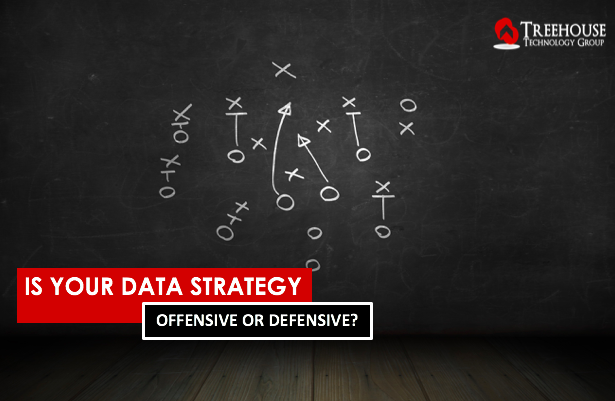Consider this: in 1992, global internet networks carried roughly 100 GB of traffic per day. Ten years later, global internet traffic amounted to 100 Gigabytes per second (GBps). In 2016, global internet traffic reached more than 20,00 GBps – and surpassed one zettabyte for the first time – the equivalent, as this article reports, of 152 million years of high-definition video.
That’s a lot of data. But even with such exponential growth – and continued predictions of increased volume – many companies are still behind the curve when it comes to developing a robust data strategy and implementing a data management plan.
As an article in Harvard Business Review reports, “less than half of an organization’s structured data is actively used in making decisions – and less than 1% of its unstructured data is analyzed or used at all.” Furthermore, “more than 70% of employees have access to data they should not, and 80% of analysts’ time is spent simply discovering and preparing data.”
While developing a data strategy can seem overwhelming and time consuming, a good place for companies to start is in understanding the difference between a “defensive” and “offensive” data strategy – a framework developed by Leandro DalleMule and Thomas H. Davenport outlined in the aforementioned HBR article.
What is a defensive data strategy?
Simply put, data defense is all about minimizing risk. This includes “ensuring compliance with regulations (such as rules governing data privacy and the integrity of financial reports), using analytics to detect and limit fraud, and building systems to prevent theft.”
A defensive data strategy also “ensures the integrity of data flowing through a company’s internal systems by identifying, standardizing, and governing authoritative data sources, such as fundamental customer and supplier information or sales data.”
Industries that operate in highly regulated environments, such as financial services, insurance and healthcare, are likely to gravitate toward a defensive data strategy.
What about data offense?
Data offense, however, focuses on “supporting business objectives such as increasing revenue, profitability, and customer satisfaction.” This includes “activities that generate customer insights (data analysis and modeling, for example) or integrate disparate customer and market data to support managerial decision-making through…interactive dashboards.” In other words, an offensive data strategy involves strategic initiatives designed to position a company for scalability, growth and increased revenue generation.
Because retailers operate in a less-regulated environment than other industries, they are more likely to pursue an offensive strategy.
So which one is better?
The goal isn’t to choose one over the other, but rather to strike the appropriate balance between being on the offense and going on the defense. There are numerous factors that must be weighed, such as the company’s overall strategy, its regulatory environment, the data capabilities of its competitors, the maturity of its data-management practices, and the size of its data budget.
Similarly, companies will likely need to continually adjust their strategy due to changing external factors. For instance, a financial services provider may have to become more offensive if competition increases, while a pharmaceutical company may have to go more on the defense in a heightened regulatory environment.
Striking this balance, then, also requires balancing data control and flexibility. As the article notes, “The more uniform data is, the easier it becomes to execute defensive processes, such as complying with regulatory requirements and implementing data-access controls. The more flexible data is—that is, the more readily it can be transformed or interpreted to meet specific business needs—the more useful it is in offense.”
Why does this matter?
Data has been a big buzzword for the past couple decades. But while some companies could afford to ignore the hype, we’ve reached a point where data has transformed the way every business operates – no matter the market or industry.
Just consider this: according to the International Institute for Analytics, by 2020, the amount of data that is worth analyzing will double – and businesses who use data will see $430 billion in productivity benefits over competitors who aren’t.
Needless to say, the success of a company is now dependent upon a robust data strategy and management plan.
Wondering if your company is implementing the right data strategy? Why not sign up for a free consultation.



